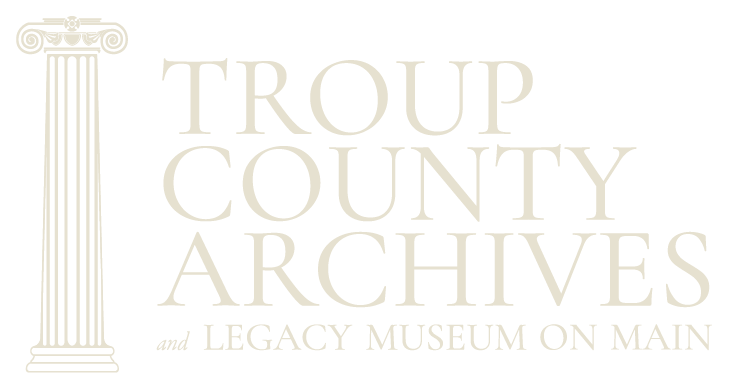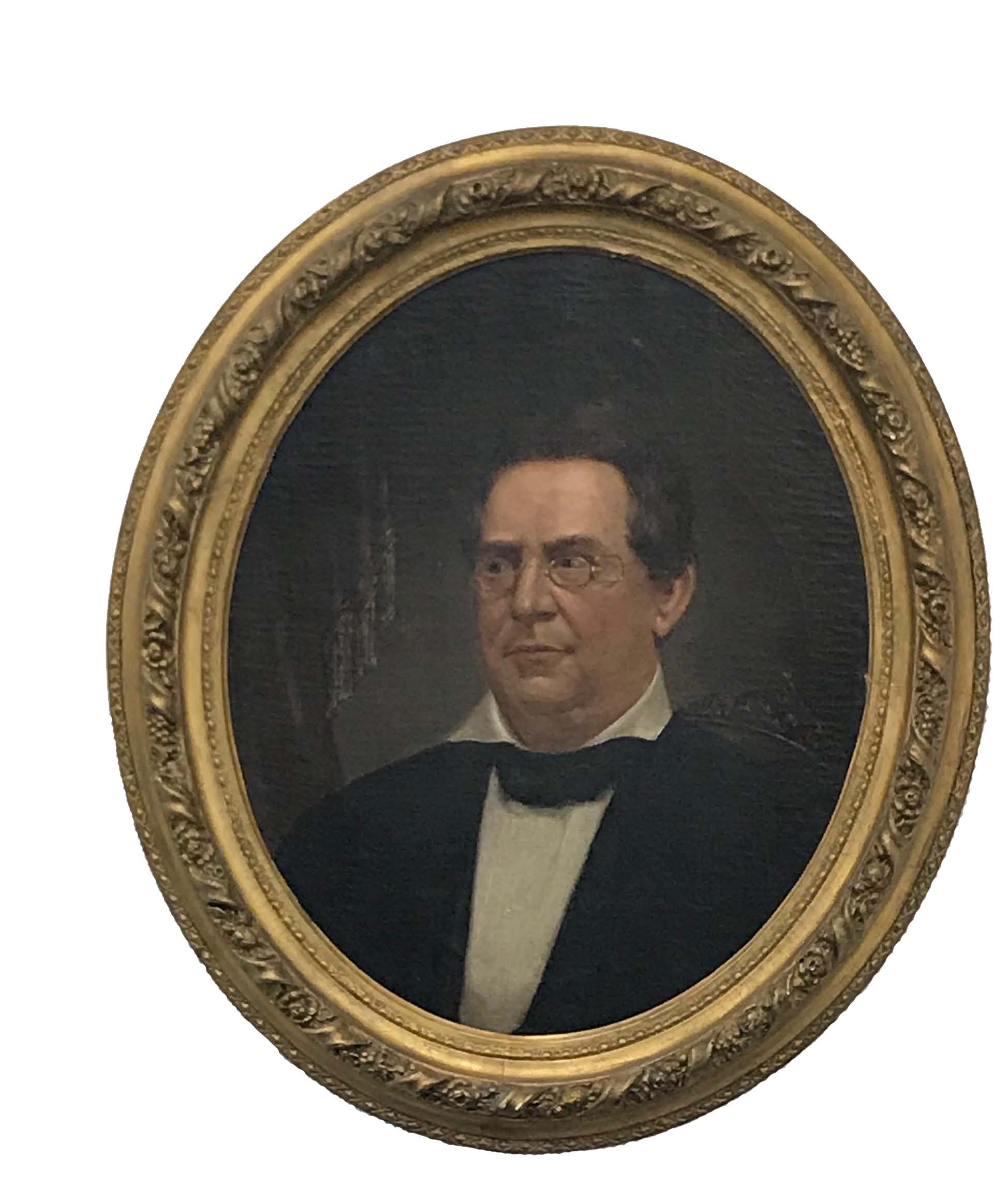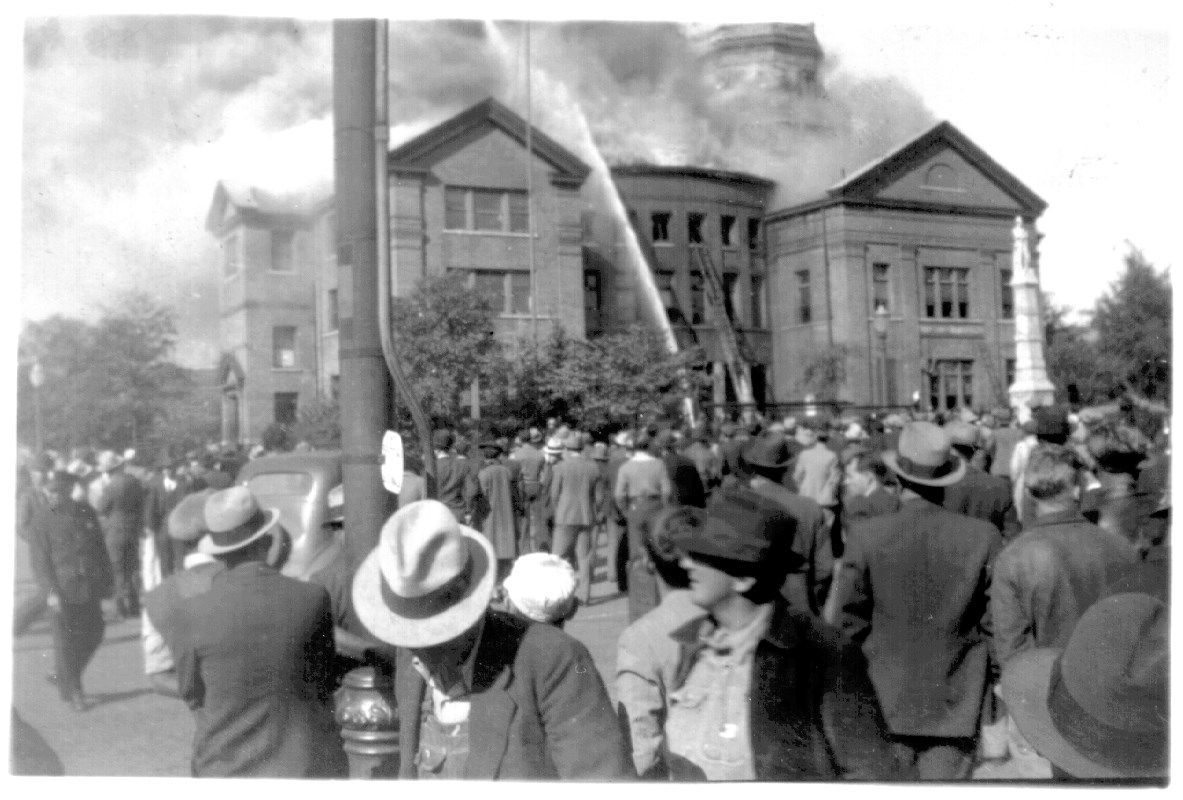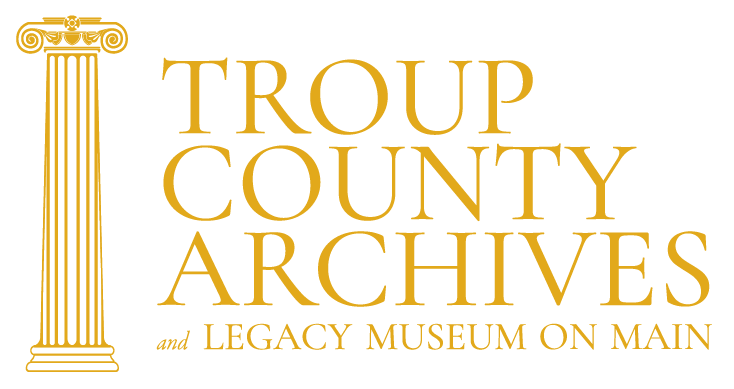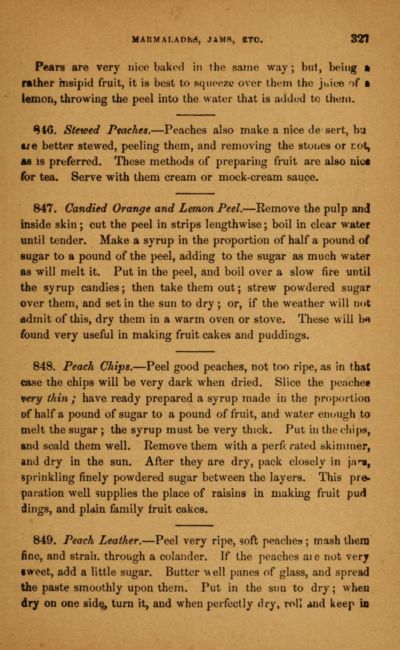
This page of Mrs. Hill’s Practical Cookery and Receipt Book offers just a few of many peach recipes. TCA collections
Botanists believe that peaches are native to northwestern China. By the time of the Roman Empire peach trees grew in the Mediterranean region. The scientific name, Prunus persica, means Persian apple, indicating that, like so many other discoveries, peaches traveled the Great Silk Road from China to Europe. Spanish explorers took peaches to the New World. Missionaries planted them at St. Augustine in the early 1500s. When Englishman George Minifie migrated to Virginia around 1610, he planted a peach orchard at his Buckland estate. Native Americans were instrumental in spreading peaches across eastern North America. Our earliest written record of peaches in this area comes from Indian agent Benjamin Hawkins’s “viatory”. In 1798, Hawkins inspected the Burnt Village, the Creek Indian town on the Chattahoochee burned by Georgia militia on September 21, 1793. Hawkins noted the charred timbers and remarked that the Indians’ peach and plum orchards still grew at the site. When settlers arrived in Troup County in the 1820s they found feral or wild peaches. Peach brandy was popular and readily available on the frontier. In late summer, before the mast crop of acorns and chestnuts ripened, wild peaches helped sustain settlers’ vital pig herds. Farmers selected for cultivation wild trees bearing the largest and sweetest fruit. Almost every nineteenth century Troup County farm included a small orchard. A few Georgia farmers concentrated on developing peaches for the retail market.
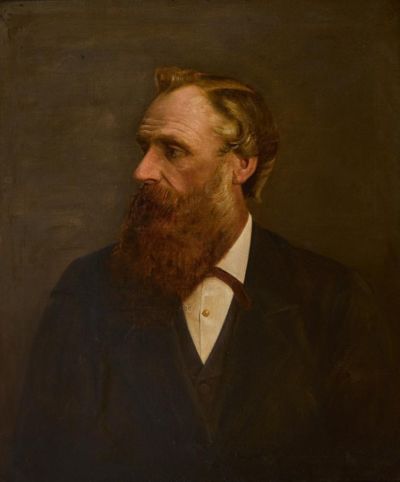
John Howard Parnell as painted by an Irish School Student in the late nineteenth century. Image courtesy Alabama Department of Archives and History
In the mid-1870s, Samuel Henry Rumph introduced the Elberta, a large sweet peach that held up under the stress of shipping. On June 14, 1872, the LaGrange Reporter stated that, for the first time, locally grown peaches were shipped to New York. Ten years later, on June 22, 1882, the paper touted Dr. H.H. Cary as the largest peach farmer in Troup County, and stated that he was experimenting with a system to dehydrate his peaches for shipment. Irish aristocrat John Howard Parnel (1843-1923) inherited a substantial sum of money when his father died in 1859. He saw opportunity for investment in post-Civil War America, and in 1866, responding to an advertisement in a New York newspaper, he purchased 1,482 acres from Colonel George Huguley, near River View in Chambers County, Alabama. Young Parnell moved to Chambers County in 1867. He brought with him from Ireland William and Margaret Merna, as farm manager and housekeeper. Under Merna’s supervision, local laborers eventually planted nearly seven hundred acres in peaches and other fruit trees. Parnell was among the first growers to successfully ship peaches by rail to northern markets. The LaGrange Reporter of August 5, 1886, noted that more than eight thousand crates of peaches were shipped from the West Point depot that summer. Parnell sold his Sunny South Fruit Farm to the A.M. Eady Company. His experimental venture lasted little more than a decade, but Parnell’s infusion of capital and optimism in the Reconstruction economy of West Point and the Valley endeared him to local residents. In the early 1890s, John returned to Ireland and, like his more famous brother, Charles, championed the cause of Irish home rule. He died in 1923. Billy and Maggie Merna chose to stay in America. Their descendants still reside in this area. — Randy Allen
